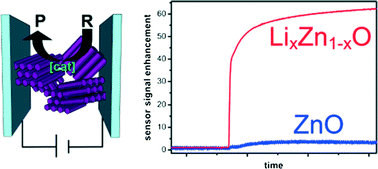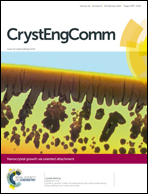Li-doped ZnO nanorods with single-crystal quality – non-classical crystallization and self-assembly into mesoporous materials
Abstract
The benefits and promise of nanoscale dimensions for the properties of (ceramic) semiconductors are widely known. 1-D nanostructures in particular have proven to be of extraordinary relevance due to their applicability in future electronic and optoelectronic devices. Key to successful technological implementation of semiconductor nanostructures is the control of their electronic properties via doping. Despite its tremendous importance, precise chemical doping of defined nano-objects has been addressed rarely so far. Frequent problems are the creation of secondary defects and related undesired property changes by incorporation of hetero-elements, and the difficulty in ensuring a uniform and precise positioning of the dopant in the nanocrystal lattice. Here, we present the synthesis of Li-doped zinc oxide nanorods, which possess excellent (single-crystal) quality. The method is based on a novel non-classical crystallization mechanism, comprising an unusually oriented disassembly step. Afterwards, the nanorods are incorporated into mesoporous layers using colloidal self-assembly. Proof-of-principle gas sensing measurements with these novel materials demonstrate the beneficial role of Li-doping, indicating not only better conductivity but also the occurrence of catalytic effects.

- This article is part of the themed collection: Nanocrystal growth via oriented attachment

 Please wait while we load your content...
Please wait while we load your content...